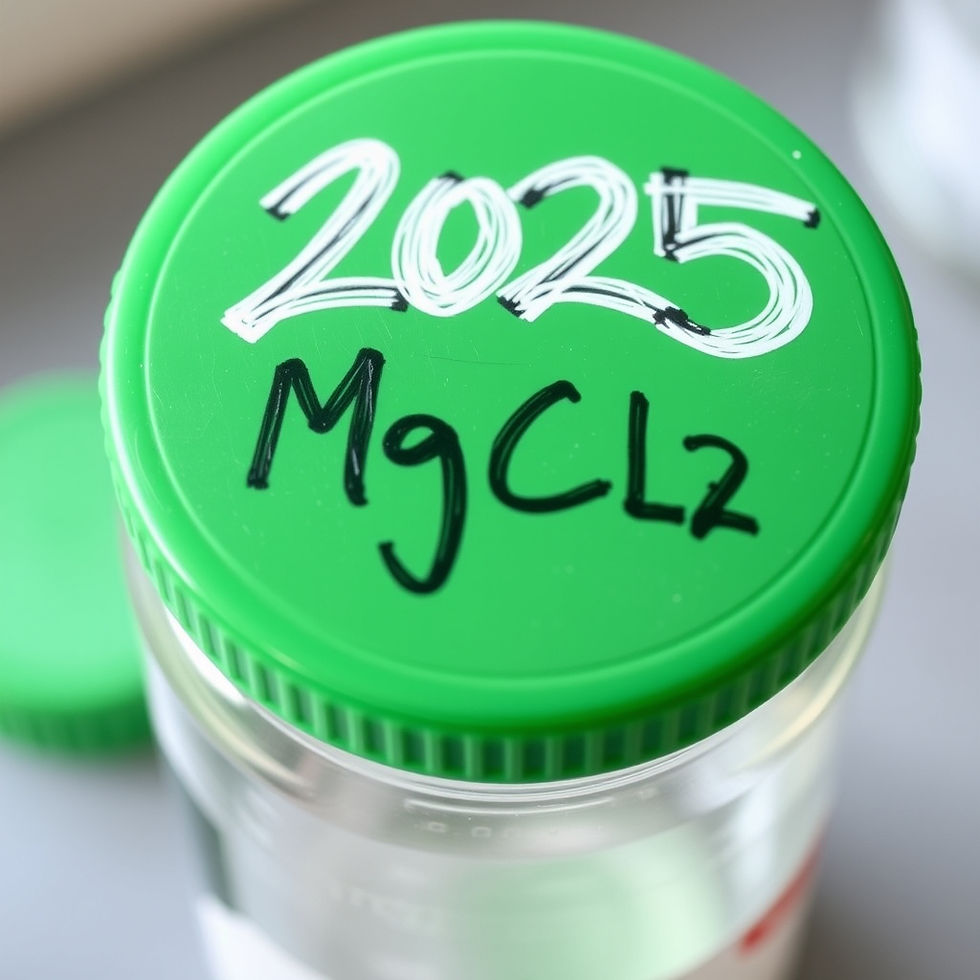How to Teach Periodic Trends with Games: A 5-Step Cycle That Actually Works
- Brennan Koch
- 16 minutes ago
- 5 min read
The periodic trends unit can feel a bit repetitive. I only do one lab to start the unit in which the kids discover the reactivity of the alkaline earth metals. After that, it can be a bit of a slog through all the different trends. Until now!
I have started a cycle through this unit that has become very successful. It only relies on 10-minute lectures and lots of discussion and activity. The cycle goes like this:
1. Teach
2. Model
3. Play
4. Quiz
5. Repeat
Background
By the time that I am ready for the trend cycle, I have already laid down some ground work. Primarily, that means the know Coulomb’s law and how to manipulate it (not mathematically, just conceptually) and they know effective nuclear charge. Those concepts are the backbone for all periodic trends. Once they have that, they are ready for some trends.
Teach
I give the students a brief lesson on the trend. I teach the following trends; radius, first ionization energy, and electronegativity. For my honors class, they also get electron affinity. I explain what the trend means. We discuss how it connects to Coulomb’s Law. They do a couple of practice problems with their table partner. This step in the cycle only takes about ten minutes.
Model
This is the step where the activity and discussion really get going. I put the kids around tables in groups of 4-6. Then they are given a deck of Trendy cards (which include element cards from the representative elements from 1-36.) Then they are given a physical challenge with the cards. For radius, I first had them organize all 26 cards by Zeff from left to right on the table. This meant that they essentially laid out the periodic table. Then I had them change it to model radius from left to right. After only a brief teaching, it takes a bit for them to start making decisions. As they start to move them around, I continually remind them to apply Coulomb’s Law. Eventually, they see that an increase in effective nuclear charge, will decrease the radius. And therefore, they have to flip their periodic table left and right.
For the first ionization cycle, they had to turn their table into a graph of the first 10 elements using Trendy cards. The bottom left corner of the desk was the origin of the graph. The x-axis represents atomic number, and the y-axis is first ionization energy. This lets the kids see more dramatically the semi-stability of the alkaline earth metals and the nitrogen family (full s and half-full p). After all the groups have their graph produced, they are challenged to compare specific parts of the graph. Which is lower, hydrogen or lithium? Which is lower, helium or neon? Which is lower, oxygen or nitrogen? By controlling the final stages of the modelling, they are forced to think about and discuss with their group some of the more refined parts of the model. Once they have made a model, it’s time to play.

Play
The kids add the trend cards from their deck of trendy concerning the trend they just learned and then they shuffle up and deal 6 cards to each player (This number can be adjusted for the length of time you want them to play). So the first round only has effective nuclear charge. Then the next time they play it’s Zeff and radius. Then Zeff, radius, and first ionization energy. Then add electronegativity. And finally my honors adds electron affinity.
The game plays like a directed Uno game. There is a trend card (like higher Zeff). And there is an element card, (Mg). The first person has to play an element card that matches the trend; higher effective nuclear charge than Mg. Let’s say the next kid plays F. Now the next turn is even harder! The only play would be a Noble Gas excluding helium. If the student can’t play an element card they can change the trend. If they can’t do that, they draw a card and the next person goes. The game definitely starts simple, with only one trend. They have conversations about each card played. They argue when someone plays an incorrect card. You will never get more student by-in on correcting their peers than during a game. And that is a great thing!
The conversations get much more intense as more trends are added. The students are constantly having to change their thinking. The trend was higher Zeff, which means to the right on the periodic table. But then the trend gets changed to lower first ionization energy. Now they have to think about their play in a whole new way. In order to limit the challenge, students can only play cards in the same family or energy level.
Once they get used to that, you can open up the play to any defendable card. This really gets the conversations going. If their defense of why they want to play a card leaves something ambiguous, they can’t play it. For instance, a student want to play silicon on magnesium when the trend is lower first ionization energy. They could argue that the due to radius, Si would be less. But the other kids will fight back saying that silicon has higher Zeff and magnesium is already partially stable due to having a full s block. Therefore, it’s not a playable card. They have made their argument and its been rebuffed. It will blow you away to listen to the depth and energy in the conversations around playable cards. It is a great way to engage their brain.
Quiz
After they play a round of Trendy (usually 10-15 minutes), it’s time for a quiz. They take out a sheet of paper and I put a quiz on the board. The quizzes at this stage are all the same style. I write a trend and then give them pairs of elements and they have to circle the element in the pair that follows the trend.
It might look like this.

They get a short time to finish the quiz. We trade and grade. Then I collect them. I always choose a score that I call the “Achiever’s Score” and highlight the people that earned above that score. I am getting instant feedback as I shuffle through the papers on how well the students understood that trend. Then I can choose to throw that quiz away or put it on my desk to be entered into the gradebook. I love when students beg, “Please don’t throw this one away, I did so good!”
The quiz gives me good formative assessment and it also increases the stakes during the game play. If there are kids who don’t know what is going on, they are forced to get the help during the game so they are ready for a quiz. It’s a healthy tension.
Repeat
Once they have demonstrated understanding of that trend, it’s time to add another and start the cycle over again. They kids get familiar with the gameplay of Trendy and can get in and out of a game quickly. It’s a great way to engage in thinking, create discussions, and have fun. All this happens as the class keeps moving forward. I have always felt that many of the activities that are done in this chapter can bog down the speed of the unit. This cycle allows you to be nimble, get live feedback, and keep kids moving forward.
Now that is a good trend.
Want to see how Trendy can work in your classroom? Trendy allows you to dictate what trends are involved in the game, giving the students a tailored game experience. Plus, you will never have as great of periodic trend conversations as those created within game play. Check out the game here!





Comments